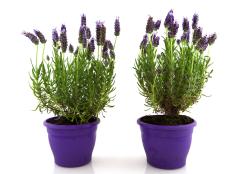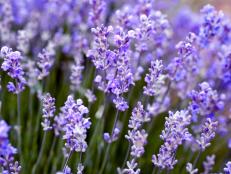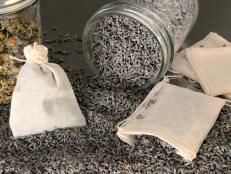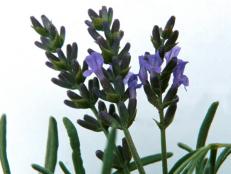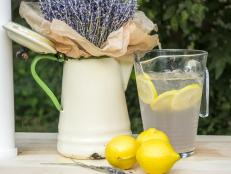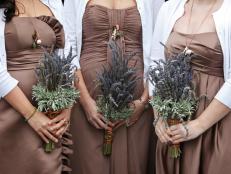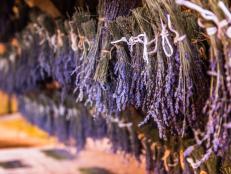Lavender Wreaths
Learn what you need to know to make your own lavender wreaths.

Image courtesy of Williams-Sonoma
Savor the beauty and aroma of beautiful lavender flowers by making a lavender wreath. The process is simple, and you can grow your own lavender flowers for harvesting. Start the project with fresh stems of lavender flowers that will dry over time to form a dried lavender wreath.
A lavender wreath begins with a large armful of fresh lavender flowers. Fresh stems are supple and easier to work with than dried. If you’re harvesting your own stems, cut them as long as possible. If you’re buying lavender bunches at a farmers’ market, choose ones with long stems. Those long, supple stems make forming the lavender wreath easier.
Construct your dried lavender wreath using a grapevine, wire or straw wreath form. Gather lavender flowers into small bunches, and wrap floral wire around stem bases to bind them together. You might want to create all the bunches first, then wire them to the wreath base. Before attaching any lavender to the wreath form, make sure the form has a hanger. If your wreath will have a definite top and bottom, attach a ribbon to the hanger so it’s easily visible as you work.
Attach the mini lavender bouquets to the wreath form one at a time, holding them in place by wrapping floral wire around the wreath form a few times. After attaching each mini lavender bouquet, clip stems to about 1 inch below the wire holding them together.
Lay the next lavender flower bunch over the stems of the previous one, hiding them from sight. To create a lush, full lavender wreath, alternately angle each successive lavender bunch slightly to the left and then to the right. Angling the flowers in this way fully covers the wreath base. If you slightly overlap the blooms of the previous bunch with each subsequent lavender bunch, the resulting lavender wreath will show only flowers—all stems and the wreath base will be hidden.
If you’re planting lavender with the intention of making lavender wreaths, choose lavender varieties with flowers that don’t tend to shatter after drying. ‘Grosso’ lavender (Lavandula x intermedia ‘Grosso’), which is a lavandin, and ‘Hidcote’ English lavender (Lavandula angustifolia ‘Hidcote’) both retain their flowers after drying.
‘Provence’ lavender (Lavandula x intermedia ‘Provence’) tends to drop its buds and blooms as soon as flowers dry. It’s a great lavender to grow for harvesting lavender buds, but it’s not a good choice for making dried lavender wreaths.
Your dried lavender wreath will retain the strongest purple hue when you hang it in a spot out of direct sunlight. You should also protect it from moisture, which can cause blooms to mold and mildew. If at some point you tire of your wreath, harvest the lavender buds and blooms to make sachets, soaps, handmade paper, candles or potpourri.







